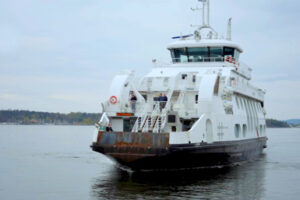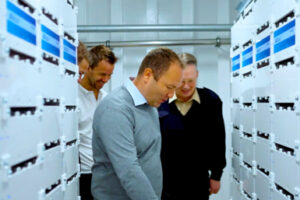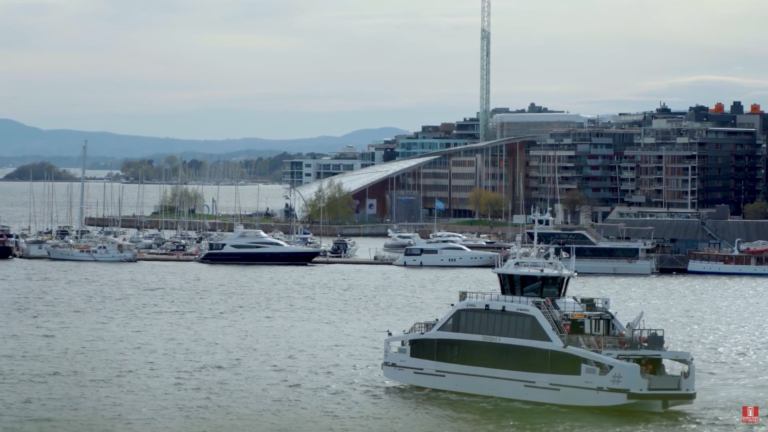Electric and Hybrid Marine Technology International explores how Danfoss Vacon NXP drives have facilitated the electrification of Norled’s Nesodden ferries, and how this retrofit project supports the ferry operator’s drive for eco-friendly services on the Oslo Fjord.
Globally, 27% of emissions come from transportation. That’s what the municipality of Oslo set out to address when it started developing a modern port. To align with Oslo’s ‘emission-free by 2030’ vision, 11 passenger ferries have been converted to fully electric operations, most recently the three passenger ferries known as Nesoddbåtene (Nesodden ferries).
The conversion was initiated by ferry operator Norled in close cooperation with systems integration company SEAM, which specializes in hybrid and all-electric vessels. It was an extensive project to convert these vessels, but the companies were convinced this was the way to the port of the future. So, in 2019, SEAM reached out to its long-time partner Danfoss to convert the existing ferries to electric power.
The challenge: Reliable service for 2.8 million annual passengers

Nesoddbåtene is the collective name for the ferry service to the municipality of Nesodden. The three Nesodd ferries are Norway’s largest car-free passenger ferry connection and one of Oslo’s most important commuter routes, sailing daily and connecting Oslo with Nesodden. With 2.8 million passengers relying on these ferries annually, precision and reliability is vital, as there is no room for downtime.
The project aimed to meet zero-emission requirements by converting the ferries to 100% battery power. The vessels were built in 2009 in France and originally ran on gas power. The owner Norled chose to retrofit the gas-powered ferries instead of scrapping functional assets.
Challenges with adjusting space and existing equipment were solved in close collaboration between SEAM, the shipowner and their partners. Electrified ferries demand an efficient charging system with a certain capacity, charging quickly in time to be ready for the next departure. Therefore, a charging tower and station were also required, designed to blend seamlessly into the port environment.
In the summer of 2019, SEAM and Danfoss Drives worked together to replace the ferries’ gas systems with batteries that could meet the requirements for both precision and robustness.
The solution: Upgrade meeting strict industry demands

Danfoss Drives met SEAM’s needs by leveraging the companies’ long-time partnership to develop more sustainable marine vessels. Based on Vacon NXP drives, the team crafted a solution suitable for the upgraded ferries and the strict industry demands, ensuring reliable performance transporting thousands of commuters daily.
According to the company, Danfoss Vacon NXP Liquid Cooled drives have been engineered for heavy industries with harsh operating conditions. Based on liquid cooling, the controllers have been designed to provide powerful performance and dependable reliability.
In the summer of 2019, the retrofit of the Nessoden ferries began in the port of Oslo. The vessels already had two Vacon NXP Grid Converter drives 690V/670kW on board for the main propulsion, which SEAM reused in the rebuilding. To accommodate a battery room, equipment related to the gas-powered engines was cleared. Finally, the gas-powered engines were replaced with 2,020kWh batteries powered by a 3,800kWh onshore charging station. In September 2019, the three ferries were ready to welcome passengers on board.
Ragnar Langåker, project director of SEAM, said, “We have worked closely with Danfoss for many years as part of our journey toward more sustainable marine vessels. They focus on building up our technical expertise in their products, and they have been a great help and contributed to our development in this field.”
The outcome: Fewer CO2 emissions for Oslo
With the Danfoss Vacon drive, the three Nesodden ferries operate exclusively on electric power in all conditions, saving 6,000 tons of CO2 annually. Plus, the electric-driven motors ensure improved air quality and reduced noise levels.
On shore, a charging station ensures 24/7 uptime, delivering 3.8MW of DC power. This capacity enables rapid eight-minute charges to fit the ferry timetable and ensure a stable ferry service.
The three retrofitted ferries mean the port of Oslo is now served predominantly by electric ferries – the three Nesodden ferries, five Boreal vessels, and the Legacy of the Fjords. SEAM has delivered most of these ferries, with electric propulsion powered by Danfoss drives.
Langåker added, “The port of Oslo is a great showcase where we can show what is possible with retrofitted passenger ferries. What has been done in Oslo can be scaled up and implemented in other cities worldwide.”
To see Danfoss’ full video exploring the project, click here.



